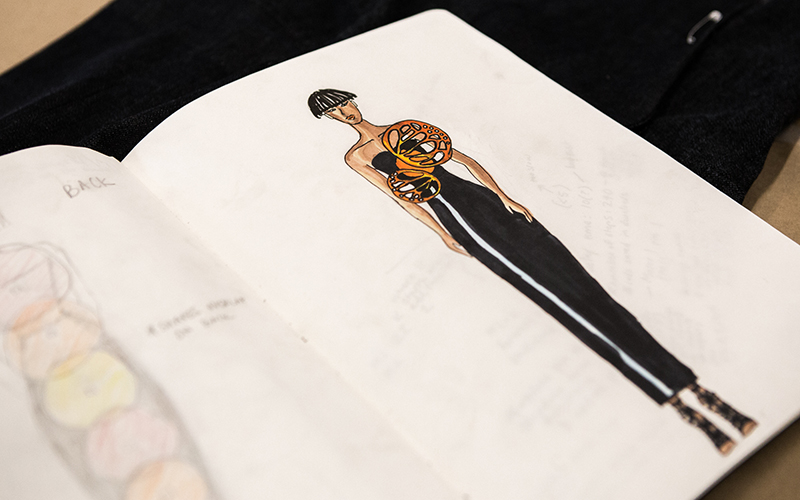
The “Holographic Dress” by multiple designers incorporates sensors that constantly measure the activity of the wearer. The design is meant to live “at the intersection of reality and augmented reality” by sending the wearer’s activity log information to a blockchain network. According to the artists’ statement, the information could be purchased, shared, and played-back as a hologram in the future. (Photo by Melina Zuniga/Cronkite News)

Based on the biomimicry of the monarch butterfly, Mariah Alcantar’s “Special Awareness” smart garment is designed to create a visual deception to ward off predators within the wearer’s personal space. (Photo by Melina Zuniga/Cronkite News)

Microchip IDs have been embedded in about 1,000 cacti easily accessible to visitors to Saguaro National Park. The chips are meant to deter thieves. (Photo by Tyler Fingert/Cronkite News)
In the final episode of season three, we discover new technologies that incorporate sustainability to solve problems. We’ll watch a fashion show that features smart clothing made out of strange materials, visit Saguaro National Park to see why the National Park Service is putting microchips in cacti and play “Happy City,” a city planning game that helps people learn about sustainability issues.
This story is part of Elemental: Covering Sustainability, a new multimedia collaboration between Cronkite News, Arizona PBS, KJZZ, KPCC, Rocky Mountain PBS and PBS SoCal.
Subscribe to the Cronkite News podcast In Focus on iTunes.